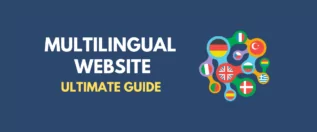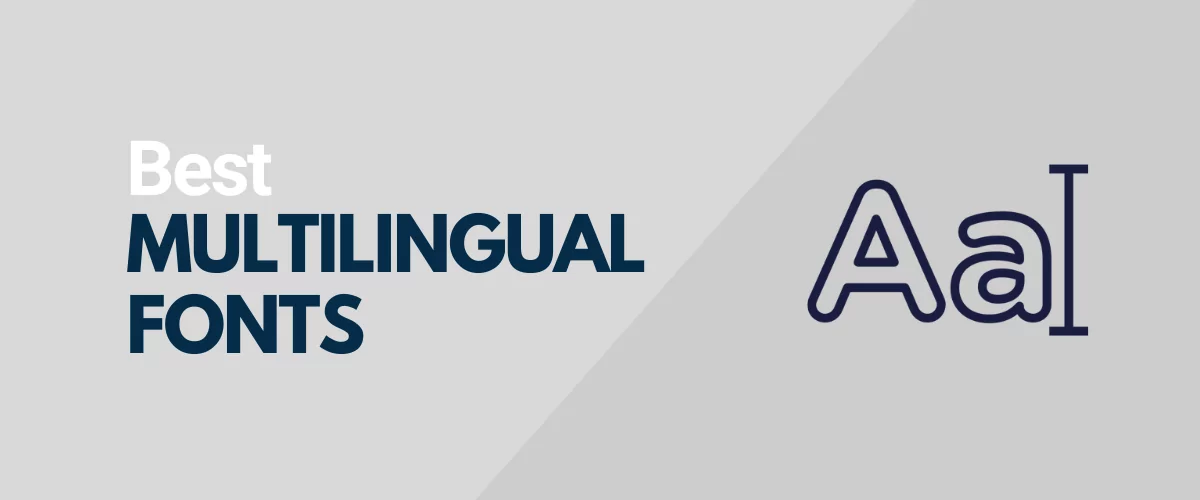
In this post
Are you in the market for the best multilingual fonts for your multi-language website? If so, we are so thrilled you found this article.
Building a multilingual website is hard, especially if you’re a beginner and doing it alone. It gets more challenging if web design is not your strongest suit.
I mean. Many considerations go into creating a successful multi-language website. Which translation service should you use? Which platform is the best for a multilingual website? Is human translation better than machine translation? And so on.
Another critical consideration is the type of fonts you choose for your multilingual website.
Why is this important? It’s simple.
Some fonts look great and are clear and readable in one language. However, the same font might fail to impress when translated into a different language.
In other words. the resulting translations are all over the place, unreadable, and full of vertical rectangular symbols commonly known as tofu.
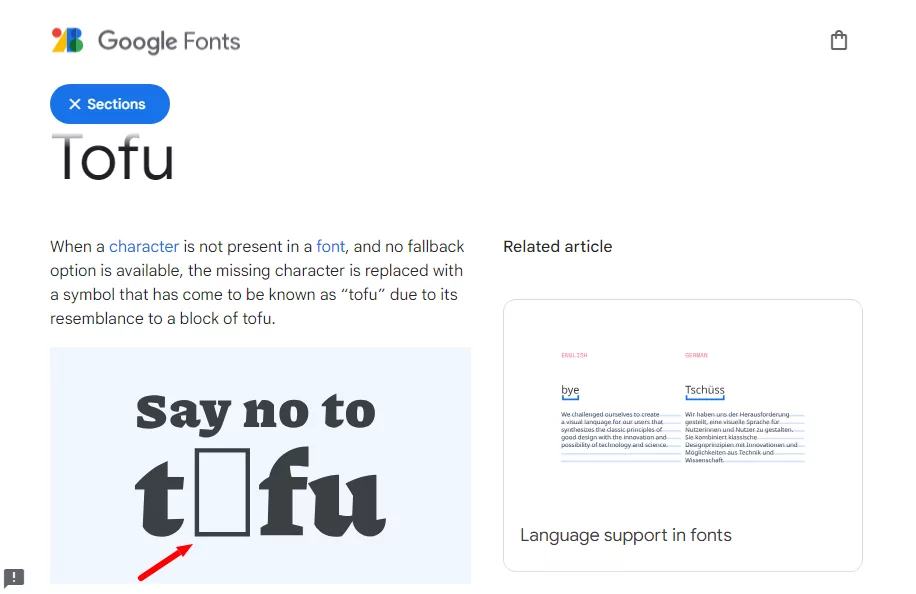
I’m sure you have seen some of those when you visited a website with poor translations. And we can all agree it doesn’t look good, especially when you’re looking to reach a multilingual audience.
What Are Multilingual Fonts?
Each written language uses varying alphabets, character sets, conventions, diacritics, glyphs, and scripts. For this reason, it is unwise to assume all your content will look great and be legible when translated into different languages.
I say this because some fonts are meant for one language. That is, the font doesn’t have the character set you’d need for working translations in other languages.
This is where multilingual fonts come in to save the day.
Unlike a conventional font that works with one language, multilingual fonts are designed to support multiple languages.
Take time and research the fonts you will use because it matters for user experience and the effectiveness of your content.
Today, we explore why businesses use multilingual fonts, what you should consider when choosing a font, and then share several favorites.
Why You Should Use Multilingual Fonts
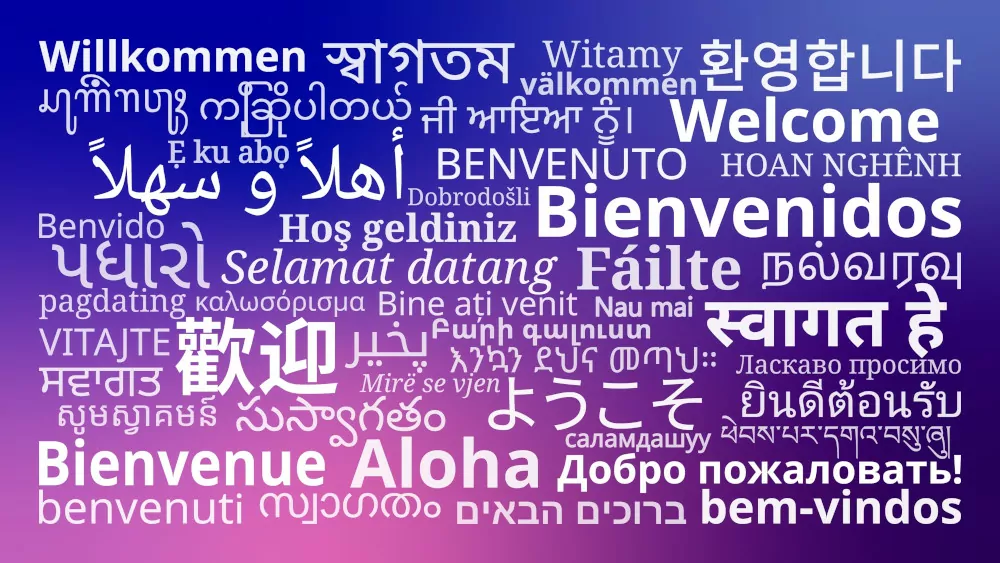
Unless you’re a seasoned web developer or type designer, you might wonder why use multilingual fonts.
Well, using reliable multilingual fonts on your multi-language website offers several benefits. Other than being one of the best practices of multilingual website design, here are more reasons why you should use multi-language fonts.
Readability and Legibility
This is the most obvious benefit of choosing the best fonts for multiple languages.
As we hinted earlier, each language has its unique character set, conventions, glyphs, and scripts, among other things.
As an illustration, languages such as Arabic and Chinese have different characters than English. If the font you choose only supports the latter, your translations will look horrible in the other two languages.
On the other hand, using multilingual fonts ensures that translated characters are displayed correctly and are not replaced by generic symbols such as the tofu.
No matter how you want to see it, your overarching goal with a multilingual website is to provide readable and legible content to your audience(s) regardless of their preferred languages.
Prevent Unnerving Display Issues
When translating a website, you probably have noted how things move around when you switch languages.
If you stick with a typical font, some characters from one language will not be available in the translations, which causes display issues.
A multilingual font, on the other hand, comes with a wide range of characters, which ensures your content looks attractive despite the translation language.
We recommend using a multilingual font when displaying translations to avoid a design that looks disconnected due to using different fonts for each language.
This consistency lets you create a polished and professional brand image across all languages.
Enhanced User Experience
It is no secret that offering a superb user experience goes hand in hand with better user retention, engagement, and conversions.
In other words, visitors who access your multi-language website through different languages should all have a pleasant experience and feel comfortable with your website design.
Multilingual fonts help you establish a pleasant user experience, which allows visitors to understand, enjoy, and engage with your website content.
Improving user experience using a multilingual font shows your commitment to serving a global audience, which will increase your brand’s appeal.
Another thing. Different browsers and platforms interpret fonts differently. Using a multilingual font ensures that all users have a uniform experience regardless of the browsers or devices they use when visiting your website.
Better SEO
For the perfect beginner, SEO is an acronym for search engine optimization. It’s the multifaceted process of optimizing your website content to rank higher in search results.
If you had no idea, offering a brilliant user experience is a big boost for your SEO efforts. That said, a website with correct font rendering for multiple languages has a better chance of ranking high in search engines.
Couple multilingual fonts and other SEO techniques to increase your website visibility and position in search results. After all, people want to stay longer on your website because your calculated choice of fonts makes content consumption effortless.
Accessibility
Last but not least, you have accessibility guidelines to comply with.
At the top of the web content accessibility guidelines, we have four principles. Your website content must be perceivable, operable, understandable, and robust.
In other words, the Web Accessibility Consortium recommends creating websites accessible to people with diverse needs, including those who want content in different languages.
Choosing multilingual fonts aligns with accessibility guidelines, which makes your website more inclusive and user-friendly.
Using multilingual fonts has many other benefits. I just chose to highlight a few main ones.
When all is said, there is no refuting that using multilingual fonts is great for user experience, readability, SEO, consistent brand images, and accessibility.
With that out of the way, what are some of the things you should consider when choosing multilingual fonts?
Factors to Consider When Choosing Multilingual Fonts
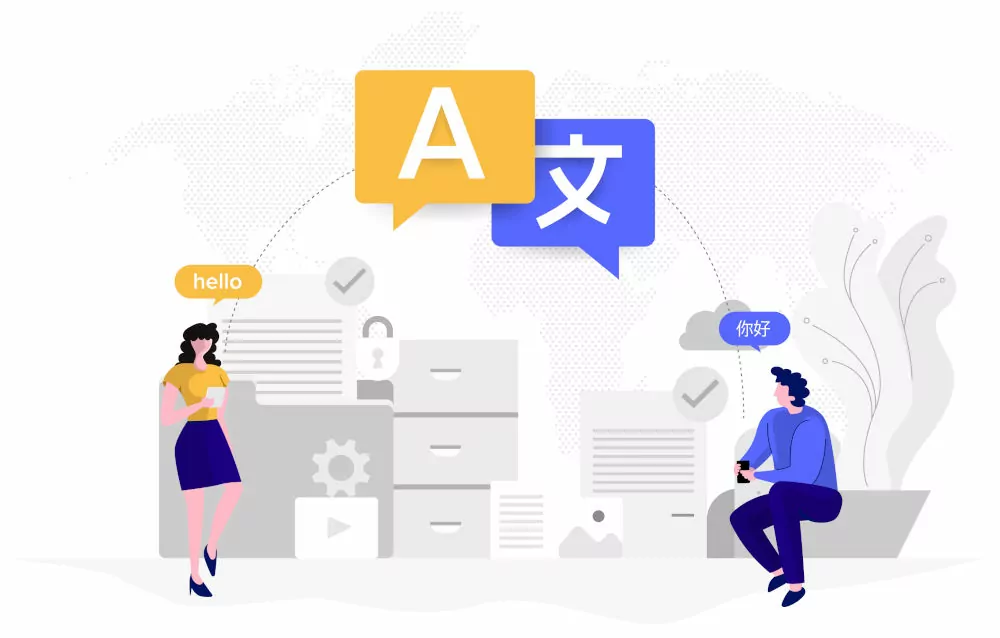
I am doing my best to ensure this article doesn’t throw you a curveball. Because, well, fonts are a tad bit sneaky for most regular folks. Unless, of course, you own a type foundry.
In other words, I would hate to make choosing the right multi-language fonts for your website harder than it already is.
So, what things should you look out for when selecting the perfect fonts for your multilingual website? The short answer is there is a lot, but I will keep this section lean since I’m just pointing you in the right direction.
Consider the following:
- Language support – When researching, choosing, and testing your multilingual fonts, aim for ones that support all the languages your website offers. Some fonts are limited to the Latin writing system, but others extend to Arabic, Chinese, Cyrillic, Greek, Korean, and more.
- Readability – What’s the use of investing in a multilingual font that makes readability and legibility a nightmare? Choose fonts that are readable in different writing systems to ensure your content is accessible to people of various cultural and linguistic backgrounds.
- Versatility in design and style – Unknown to many, fonts have many characteristics, such as font size, style, line height, weight, and more. Go for multilingual fonts with versatile designs and styles for different scenarios. For instance, some fonts are fantastic for titles but flop when it comes to body content.
- Licensing and usage rights – You don’t want to get on the wrong side of the law. Now, do you? Some fonts are free to use as you will, but others require a license for commercial use. Check the usage rights before using any font on your site.
- Web font performance – Fast page loading speed is critical for a better user experience. Choose multilingual fonts that load quickly, and consider using a CDN to speed things up. Additionally, ensure the font is well-supported on multiple browsers and devices.
- Global acceptance and accessibility – To give you a headstart, consider using fonts that are already widely accepted globally. Also, check if your choice font has accessibility features. These might include enough spacing, distinct character shapes, and more. Type foundries offer this info 🙂
- Cultural appropriateness – For best results, choose fonts that align with the cultural sensitivities of your various audiences. Different font styles may lead to misunderstandings in some cultural settings.
See? I told you this section will be short. Instinctfully, you want to test your multilingual fonts extensively before implementing them on your website. Cover your bases to avoid unpleasant surprises later.
Now that you know why you should use multilingual fonts and some factors to consider while choosing, here are some brilliant choices to help you hit the ground running.
The Best Multilingual Fonts for 2025 & Beyond
There are tons of multilingual fonts on the web, which means it is impossible to cover all of them in a single article. You have free and paid typefaces, so you have plenty of choices regardless of your budget.
With that said, let us see the fonts that the type design world offers.
Google Noto
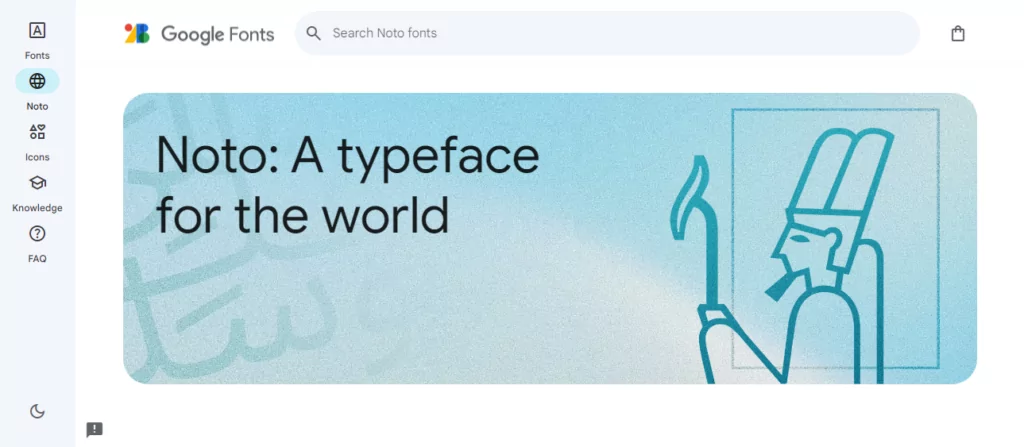
Created by Google, Noto is a collection of high-quality fonts in more than 1,000 languages and 150 writing systems (scripts).
These multilingual fonts come with multiple widths and weights in sans, serif, mono, and other styles to accommodate a wide range of applications, not just websites.
The Noto font family is designed to achieve visual harmony across multiple languages and scripts.
In Latin, “Noto” translates to “I write, I mark, I note.” Also, the font name is short for “no tofu” since the project aims to eliminate the dreadful vertical rectangles we mentioned earlier.
Noto covers many popular scripts such as Arabic, Japanese, Korean, Myanmar, et cetera. You also get a nice collection of color emojis.
You can use Noto fonts for personal or commercial purposes without cost, but you can’t sell them as yours.
TT Norms Pro
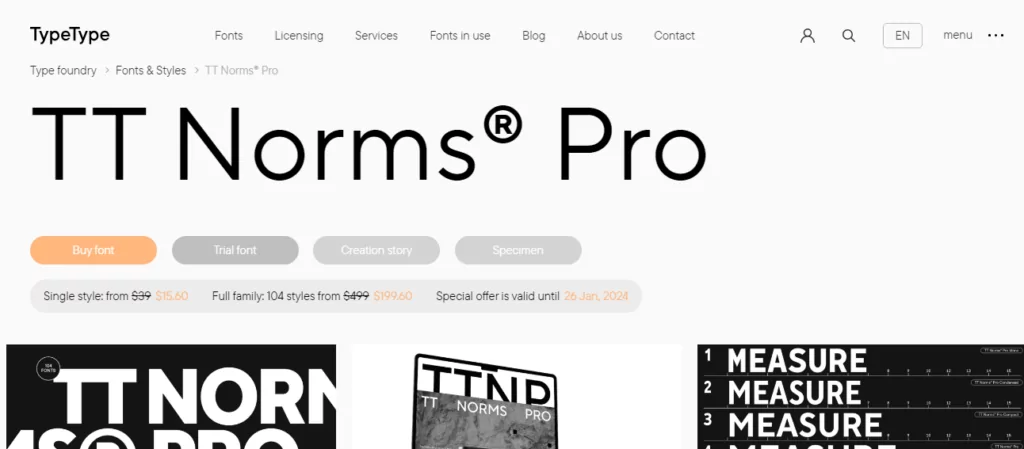
TT Norms Pro is one of the most popular commercial fonts, perfect for digital and print publications. The font was released in 2021 by the TypeType foundry.
The collection was recently updated and supports over 280 languages in 100+ font styles. The font is a functional sans serif for aesthetic design choices.
TT Norms Pro is a versatile and stylish font ideal for websites in any industry. It’s the signature font of big-name brands such as Intercom, Inc., CBSN, and Sartorius AG, among others.
The complete font family (with 104 fonts) will set you back $199.60, but the offer is valid until 26th Jan 2024.
To boot, customization of the TT Norms Pro font is available upon request.
Helvetica World
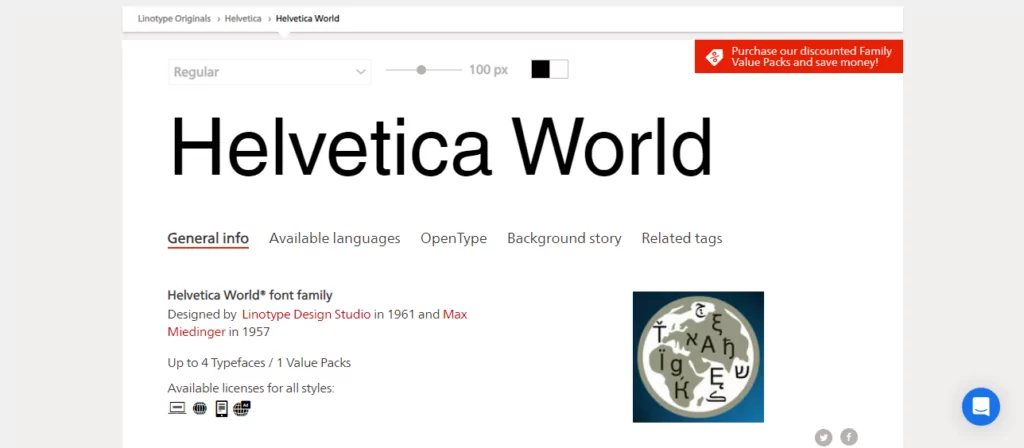
Helvetica, also known as Neue Haas Grotesk, is a popular sans-serif font that Max Miedinger developed in 1957. Today, the Linotype Design Studio maintains and updates the font.
Helvetica World is an updated version of the Helvetica font, which supports 89 languages, including Romanian, Turkish, Serbian, and Russian.
This font boasts a sleek design with crisp edges, making it the perfect choice for any website that needs to support multiple languages. Its versatility and clarity are unmatched.
It supports various writing systems, including Latin, Arabic, Greek, Hebrew, and more, as well as a range of characters and symbols.
Helvetica World comes in four styles: regular, bold, italic, bold italic. The license starts at €165.99 (roughly $182) at this writing. You can also spring for a bundled package starting from €439.99.
Other Notable Mentions
The above fonts are my favorite and cater to a wide range of languages and writing systems. Besides, we would be here all day if we covered every multilingual font under the sun.
To keep the section short and sweet, here are some honorable mentions based on user reviews across the interwebs.
With the above tips and fonts, you’re ready to rock the world. You can create a fully multilingual website that’s attractive and, more importantly, usable.
No matter the fonts you choose, you need a solid website translation solution. For WordPress users, I can’t think of a better translation plugin than TranslatePress.
TranslatePress Multilingual
Conclusion
Still can’t decide on the multilingual font you need for your multi-language website? Tell you what, it’s simple. Start with something safe, such as Google Noto or Open Sans, and work your way from there.
As you’d expect, you will need lots of research beforehand to find the perfect font for your multilingual website.
All in all, I hope you found today’s article helpful. Please share and leave a comment. All the best!
